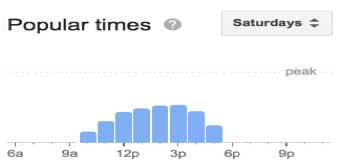It’s Time to Cut the Long Lines for Government Services
Nobody likes to wait for service, but we seem to reserve a special level of ire when waiting for government services. There’s a way to change that.
We hate to wait, especially for something we don't want to do, such as get a license at the Department of Motor Vehicles, navigate airport bag-and-body checks, or call the cable company for service. Any form of waiting is irritating, but we seem to reserve a special level of ire when waiting for government. With so much anger directed at government these days, how can government reduce the pain of waiting?
I blogged on this topic about 10 years ago, after a frustrating visit to my state’s DMV. Considered innovative at the time, my DMV had sent a letter suggesting I check online for real-time wait times. I did as suggested, but the reasonable wait time I had seen online grew significantly while en route. In my blog, I urged the DMV to post not just real-time wait times, but also historic data for different times of the day, days of the week, and weeks of the year. My state DMV has since started posting average historic wait times for each service location, but if a trip to a DMV office is necessary, this average information is of limited use. It can help me decide which location to visit, but not when.
When I first blogged on this topic, I could not find an example to illustrate what I meant by time of day, day of week, and week of year information. Google has now provided it. It posts graphs for frequently visited addresses, indicating the most popular visiting times for every hour of every day. The graph below is for the Museum of Modern Art in New York:

Readily available via computer or mobile device, this simple graph enables those who don’t like “rush hours” to plan accordingly.
While government cannot tap the wealth of data that smartphone users share with Google, it can—and should—collect, organize, and share data about the timing and duration of government visits and other transactions in ways that are easily found, accessed, and understood. Some agencies already collect and share this kind of information, and some use it to inform staff allocation. I have not, however, seen any do so in a format that can easily inform individual decisions about when and where to obtain a service. (If you have, please let me know.)
In the age of online information and mobile apps, this needs to change. Every government service for which people can make personal choices about when or where they want to get served should post time patterns in at least three ways: on-line for every service location, at the point of transaction, and in periodic performance reports and plans.
- Online, as Google does, to inform individual decisions about when and where to use a government service (or schedule other events that affect the demand for government service, such as plane travel). If people choose less popular times and locations, it can reduce everyone’s wait times, assuming constant staffing.
- At point of transaction for people who do not look online, to validate data accuracy, and to mitigate the pain of waiting. On the last point, research on transit wait times finds that communicating train arrival times (as some transit system now do) reduces passengers’ tendency to overestimate actual wait times. Research on emergency room patients similarly finds that communicating wait times makes patients more accepting of longer wait times and more satisfied overall.
- In annual, quarterly, or monthly performance reports, complemented by descriptions of what the agency is doing to reduce wait time and the pain of waiting (e.g., more online transactions, adding people in high-demand periods, reducing staff levels in slow times); how well those actions are working; and future adjustments planned.
Government can, of course, reduce wait-time frustration in other ways, too. It can enable more online interactions and reengineer waiting processes. It can also adopt a variety of practices, such as adding benches and shelters for transit riders, explaining the reason for long waits, and keeping people interested in or doing other things while waiting. Research and private sector experience suggest numerous approaches government can test to reduce the frustration of waiting.
In an era of data visualization, mobile apps, and an abundance of electronic information screens, isn’t it time for every government agency that serves people who must wait—whether at a state DMV, TSA, Social Security Administration, public recreation facility, or municipal parking lot—to report wait time performance in ways that reduce the pain of waiting? In an era with so many advocates for evidence-based government, isn’t it also time to build a continuous learning and improvement capacity that helps those managing these programs learn from research and others’ experience and co-invest in measured trials to find better wait management practices?
Shelley H. Metzenbaum is a nonresident senior fellow of the Volcker Alliance. She is former associate director for performance and personnel management at the Office of Management and Budget, where she was responsible for setting and implementing the Obama administration’s approach to improving the performance of federal programs.



